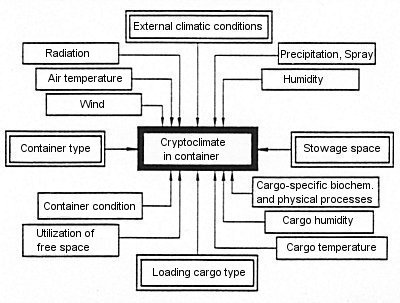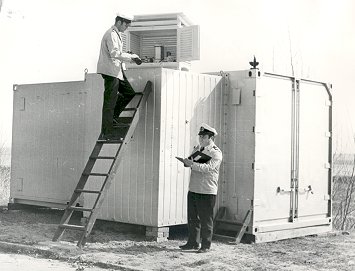 |
| Figure 9: Factors influencing container cryptoclimate [42] |
The four decisive influencing factors are:
- weather conditions during the voyage
- the type of cargo with which the container is packed
- the type of container
- the container stowage space
Climatic conditions during the voyage are determined by the route, season and current weather events. Consequently, it is not entirely straightforwardly possible to transfer the experience gained from one voyage or one route to another as the stresses vary between the different routes and individual voyages. Solar radiation, air temperature and wind are of significance to thermal stress.
The temperatures encountered in containers are primarily determined by heat exchange across the steel boundary surfaces, with inward and outward radiant transfers predominating.
 |
| Figure 10: Hold meteorology study group of Warnemünde-Wustrow University of Seafaring, 1970: container with air lock and weather station; Svenson [54] |
Good heat-transfer properties, especially through the metal walls, and the relatively large ratio of container surface area to container volume have a favorable impact in this respect (20' container, approx. 1.80 m²/m³).